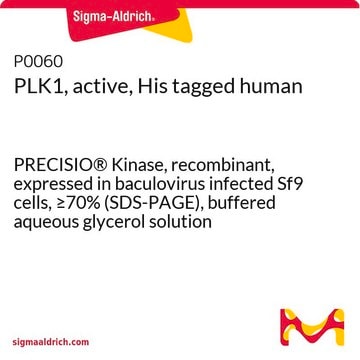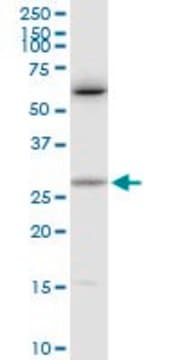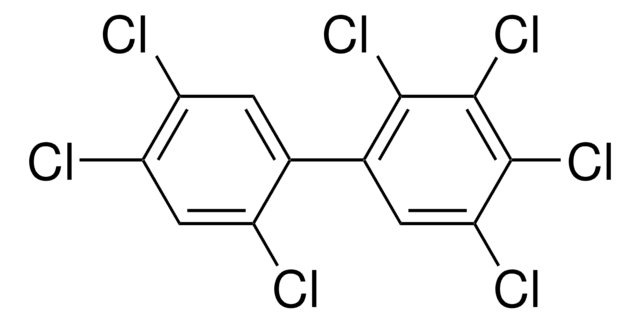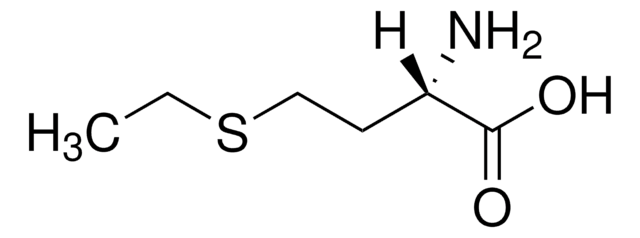SRP0360
PLK1 Polo Box Domain active human
recombinant, expressed in E. coli, ≥90% (SDS-PAGE)
Sinonimo/i:
STPK13, polo-like kinase 1
Autenticatiper visualizzare i prezzi riservati alla tua organizzazione & contrattuali
About This Item
Codice UNSPSC:
12352200
NACRES:
NA.32
Prodotti consigliati
Origine biologica
human
Ricombinante
expressed in E. coli
Saggio
≥90% (SDS-PAGE)
Forma fisica
aqueous solution
PM
53 kDa
Confezionamento
pkg of 100 μg
Condizioni di stoccaggio
avoid repeated freeze/thaw cycles
Concentrazione
2.9 mg/mL
N° accesso NCBI
N° accesso UniProt
Condizioni di spedizione
dry ice
Temperatura di conservazione
−70°C
Informazioni sul gene
human ... PLK1(5347)
Descrizione generale
Human Plk1 polo box domain (GenBank Accession No. NM_005030), amino acids 367-end with N-terminal GST-tag, MW=53 kDa, expressed in an E. coli expression system.
Polo-like kinase 1 (PLK1) belongs to the PLK family. It comprises polo-box domain (PBD). PBD, in turn, contains polo boxes (PB1 and PB2) with a 6-stranded β sandwich and an α helix as structural elements. The PLK1 gene is mapped to human chromosome 16p12.2.
Applicazioni
PLK1 Polo Box Domain active human has been used in the in vitro binding assay with various synthetic peptides coupled to streptavidin beads. It has also been used in binding studies with fluorescein-labeled substrate peptide 5-carboxyfluorescein-GPMQSpTPLNG to test the effect of various inhibitors.
Azioni biochim/fisiol
Polo-like kinase 1 (PLK1) is a mitotic kinase that mediates the regulation of various events in mitosis including chromosome segregation, cytokinesis, centrosome maturation, and separation. It activates cell division cycle 25 (CDC25) phosphatase which further regulates mitotic entry. Elevated expression of PLK1 is observed in many tumors.
Codice della classe di stoccaggio
10 - Combustible liquids
Classe di pericolosità dell'acqua (WGK)
WGK 2
Punto d’infiammabilità (°F)
Not applicable
Punto d’infiammabilità (°C)
Not applicable
Certificati d'analisi (COA)
Cerca il Certificati d'analisi (COA) digitando il numero di lotto/batch corrispondente. I numeri di lotto o di batch sono stampati sull'etichetta dei prodotti dopo la parola ‘Lotto’ o ‘Batch’.
Possiedi già questo prodotto?
I documenti relativi ai prodotti acquistati recentemente sono disponibili nell’Archivio dei documenti.
Sugunadevi Sakkiah et al.
PloS one, 9(7), e101405-e101405 (2014-07-19)
The polo-like kinase 1 (Plk1) is a critical regulator of cell division that is overexpressed in many types of tumors. Thus, a strategy in the treatment of cancer has been to target the kinase activity (ATPase domain) or substrate-binding domain
Sara Abdelfatah et al.
Journal of advanced research, 16, 145-156 (2019-03-23)
Polo-like kinase 1 (PLK1), a member of the Polo-like kinase family, plays an important regulatory role in mitosis and cell cycle progression. PLK1 overexpression is correlated with tumourigenesis and poor prognosis in cancer patients. Therefore, the identification of novel compounds
S-L Zhou et al.
European review for medical and pharmacological sciences, 23(5), 2084-2091 (2019-03-28)
Our study aimed to explore the effects of miRNA-296-5p on the biological behaviors of papillary thyroid carcinoma (PTC) cells and its potential mechanism. Twenty-eight PTC tissues and the corresponding non-cancerous tissues were collected. Real Time-quantitative Polymerase Chain Reaction (RT-qPCR) analysis
Zsofia A Novak et al.
Developmental cell, 37(6), 545-557 (2016-06-22)
Centrosomes and cilia are organized by a centriole pair comprising an older mother and a younger daughter. Centriole numbers are tightly regulated, and daughter centrioles (which assemble in S phase) cannot themselves duplicate or organize centrosomes until they have passed
Pooja Sharma et al.
Scientific reports, 9(1), 15930-15930 (2019-11-07)
The human polo-like kinase PLK1 coordinates mitotic chromosome segregation by phosphorylating multiple chromatin- and kinetochore-binding proteins. How PLK1 activity is directed to specific substrates via phosphopeptide recognition by its carboxyl-terminal polo-box domain (PBD) is poorly understood. Here, we combine molecular
Il team dei nostri ricercatori vanta grande esperienza in tutte le aree della ricerca quali Life Science, scienza dei materiali, sintesi chimica, cromatografia, discipline analitiche, ecc..
Contatta l'Assistenza Tecnica.








